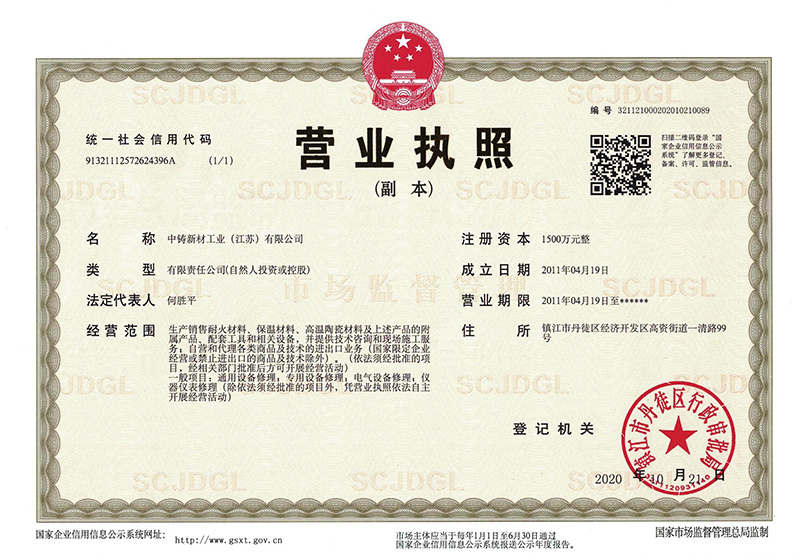News
SINO-FOUNDRY—professional refractory manufacturer
The Science of Castable: Enhancing Aluminum Performance and Efficiency through Advanced Techniques
2025-07-25
The Science of Castable: Enhancing Aluminum Performance and Efficiency Table of Contents 1. Introduction to Castable Aluminum Materials 2. Understanding Castable Alloys 3. Benefits of Castable Aluminum in Various Industries 4. Advanced Casting Techniques for Enhanced Performance 5. Applications of Castable Aluminum 6. The Future of Castable Aluminum Materials 7. Challe
The Science of Castable: Enhancing Aluminum Performance and Efficiency
Table of Contents
- 1. Introduction to Castable Aluminum Materials
- 2. Understanding Castable Alloys
- 3. Benefits of Castable Aluminum in Various Industries
- 4. Advanced Casting Techniques for Enhanced Performance
- 5. Applications of Castable Aluminum
- 6. The Future of Castable Aluminum Materials
- 7. Challenges and Solutions in Aluminum Casting
- 8. Frequently Asked Questions
- 9. Conclusion
1. Introduction to Castable Aluminum Materials
The field of metallurgy has seen significant advancements, particularly in the realm of aluminum production and casting. **Castable aluminum** represents a crucial innovation, allowing for the creation of complex shapes and forms that are both lightweight and strong. This article aims to explore the various aspects of castable aluminum, including its scientific foundations, advantages, and applications across industries.
2. Understanding Castable Alloys
Castable alloys are specifically designed for casting processes, distinguished by their unique compositions and characteristics. These alloys often include a mixture of aluminum with other elements such as silicon, copper, magnesium, and zinc, which enhance their properties for casting.
2.1 Composition of Castable Aluminum Alloys
The primary components of castable aluminum alloys typically include:
- **Silicon**: Enhances fluidity and reduces shrinkage during solidification.
- **Copper**: Improves strength and hardness.
- **Magnesium**: Contributes to corrosion resistance and weldability.
- **Zinc**: Offers improved strength and ductility.
The balance of these elements determines the overall performance of the aluminum alloy, making it essential to understand their interactions and effects.
2.2 Classification of Castable Alloys
Castable aluminum alloys are classified into several series, including:
- **Aluminum-Silicon Alloys (Series 3xx)**: Known for excellent casting characteristics and corrosion resistance.
- **Aluminum-Copper Alloys (Series 2xx)**: Used for applications requiring high strength at elevated temperatures.
- **Aluminum-Magnesium Alloys (Series 5xx)**: Notable for their corrosion resistance and weldability.
Each series offers distinct advantages tailored to specific applications, making it vital to select the appropriate alloy based on performance requirements.
3. Benefits of Castable Aluminum in Various Industries
The benefits of using castable aluminum materials extend across multiple industries, from aerospace and automotive to construction and consumer goods.
3.1 Lightweight and Strength
One of the most significant advantages of castable aluminum is its lightweight nature without compromising on strength. This is especially critical in industries like aerospace, where reducing weight translates to improved fuel efficiency and reduced emissions.
3.2 Corrosion Resistance
Castable aluminum alloys offer exceptional resistance to corrosion, making them ideal for applications exposed to harsh environments. This property ensures longevity and reduces maintenance costs for manufacturers.
3.3 Design Flexibility
The versatility of castable aluminum allows for intricate designs and complex geometries that traditional manufacturing methods cannot achieve. This flexibility empowers engineers and designers to innovate without constraints.
4. Advanced Casting Techniques for Enhanced Performance
To maximize the benefits of castable aluminum, several advanced casting techniques have emerged. These innovative methods enhance the efficiency and performance of the final products.
4.1 Die Casting
Die casting involves forcing molten aluminum into a mold under high pressure. This method produces components with excellent dimensional accuracy and a smooth surface finish, making it ideal for high-volume production.
4.2 Investment Casting
Investment casting, also known as lost-wax casting, provides exceptional detail and surface quality. This technique is particularly useful for producing complex parts in industries such as aerospace and medical devices.
4.3 Sand Casting
Sand casting is a traditional method that allows for large and heavy components to be produced economically. Although it may require more finishing work, it remains a popular choice for custom castings.
5. Applications of Castable Aluminum
The range of applications for castable aluminum is vast, showcasing its adaptability and performance qualities.
5.1 Aerospace Industry
In aerospace, castable aluminum is used for structural components, fuel tanks, and engine parts, where weight reduction and strength are critical for safety and efficiency.
5.2 Automotive Industry
The automotive industry employs castable aluminum for engine blocks, transmission cases, and suspension components, enhancing performance and fuel economy.
5.3 Consumer Products
From cookware to sporting goods, castable aluminum products offer durability and aesthetic appeal in consumer markets, providing both functionality and design.
6. The Future of Castable Aluminum Materials
The future of castable aluminum is bright, with ongoing research and development aimed at improving performance, sustainability, and production processes.
6.1 Sustainable Practices
As industries move towards sustainability, castable aluminum materials are being developed with recycled content, reducing overall environmental impact. Innovations in recycling methods are enhancing the circular economy.
6.2 Smart Alloys
The exploration of **smart alloys**—materials that respond to environmental stimuli—holds potential for the future use of castable aluminum, enabling applications in advanced technology sectors.
7. Challenges and Solutions in Aluminum Casting
Despite its advantages, aluminum casting faces several challenges that require innovative solutions.
7.1 Defects in Castings
Common defects, such as porosity and inclusions, can affect the performance of cast parts. Advanced techniques in quality control and the use of simulation software can help identify and mitigate these issues during production.
7.2 Cost Management
The cost of raw materials and the complexity of advanced casting processes can pose challenges. Streamlining production and investing in efficient technologies can help manage costs without sacrificing quality.
8. Frequently Asked Questions
8.1 What is castable aluminum?
Castable aluminum refers to specific aluminum alloys designed for casting processes, offering excellent fluidity, strength, and versatility.
8.2 What are the benefits of using castable aluminum?
Castable aluminum is lightweight, corrosion-resistant, and allows for complex designs, making it ideal for various industries.
8.3 How does die casting work?
Die casting involves forcing molten aluminum into a mold under high pressure, creating precise and consistent parts.
8.4 What industries utilize castable aluminum?
Castable aluminum finds applications in aerospace, automotive, construction, and consumer products.
8.5 What challenges are associated with aluminum casting?
Challenges include defects in castings, cost management, and the need for quality control, which can be addressed through advanced techniques and technology.
9. Conclusion
The science of castable aluminum is a dynamic and evolving field that continues to push the boundaries of what is possible in materials science. Through advanced techniques and a comprehensive understanding of alloy compositions, manufacturers can enhance the performance and efficiency of aluminum products. As industries increasingly prioritize sustainability and innovation, castable aluminum will play a pivotal role in shaping the future of manufacturing across various sectors. By harnessing the benefits of castable aluminum, we can create more durable, efficient, and environmentally-friendly solutions that meet the demands of tomorrow's technological landscape.
Related News
2024-11-05
Zhongzhu New Materials Industry sincerely invites you to participate in the 24th International Forum and Exhibition on Recycled Metals.

WeChat public account

View mobile website
Address : No. 99, Yiqing Road, Gaozi Street, EconomicDevelopment Zone, Dantu District, Zhenjiang City
Fax : +86-511-85683066
E-mail : sales@sfr168.com
Website : https://www.sfr168.com
Copyright©2023 Sino-Foundry Refractory(Jiangsu) Co.,Ltd. Powered by:www.300.cn
Copyright©2023 Sino-Foundry Refractory(Jiangsu) Co.,Ltd.
IPV6 | SEO | Cloud Information



